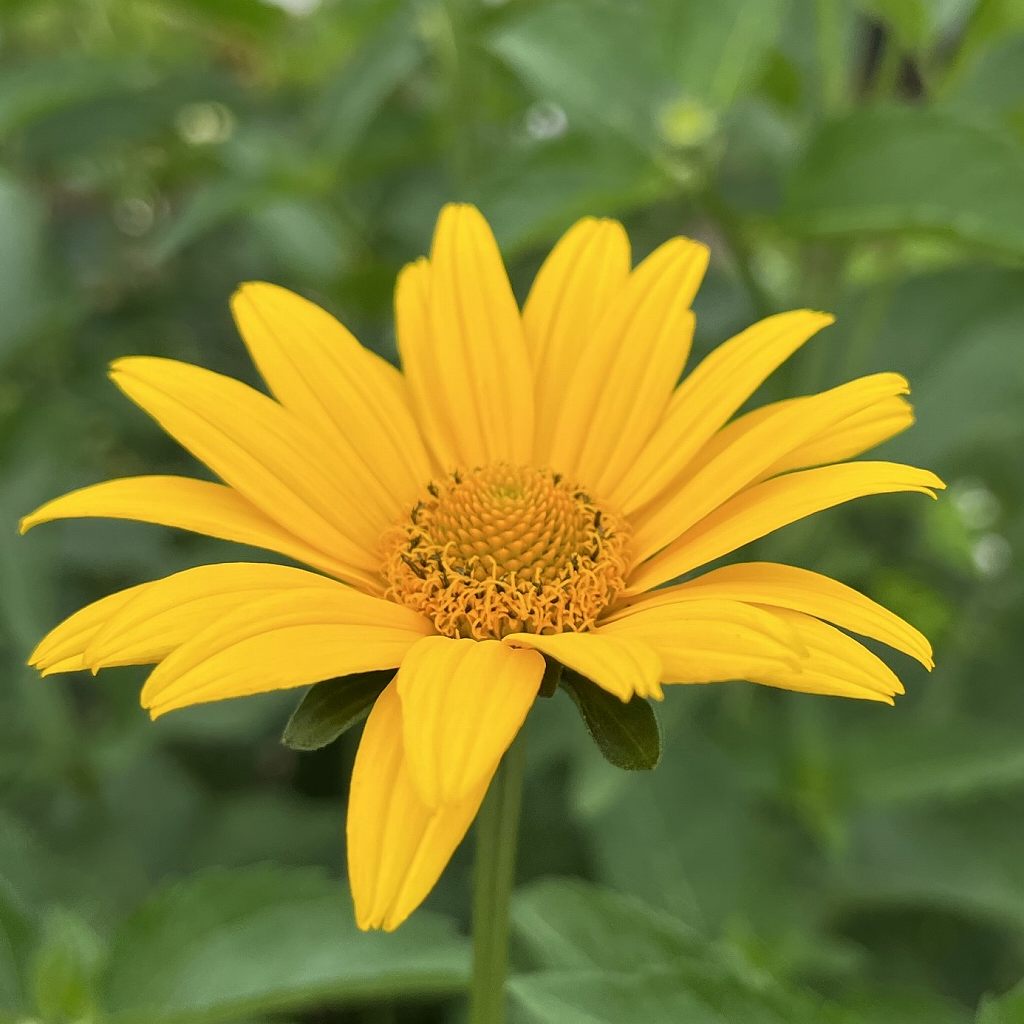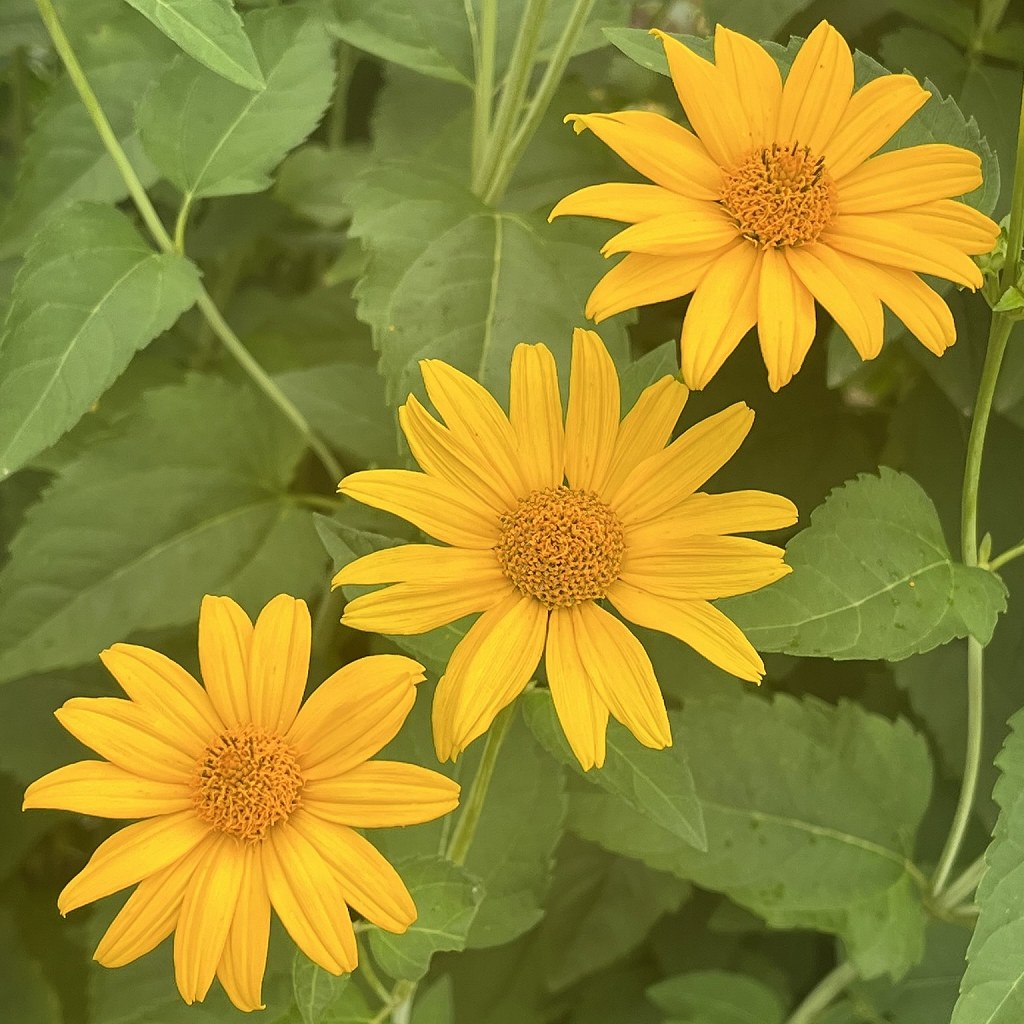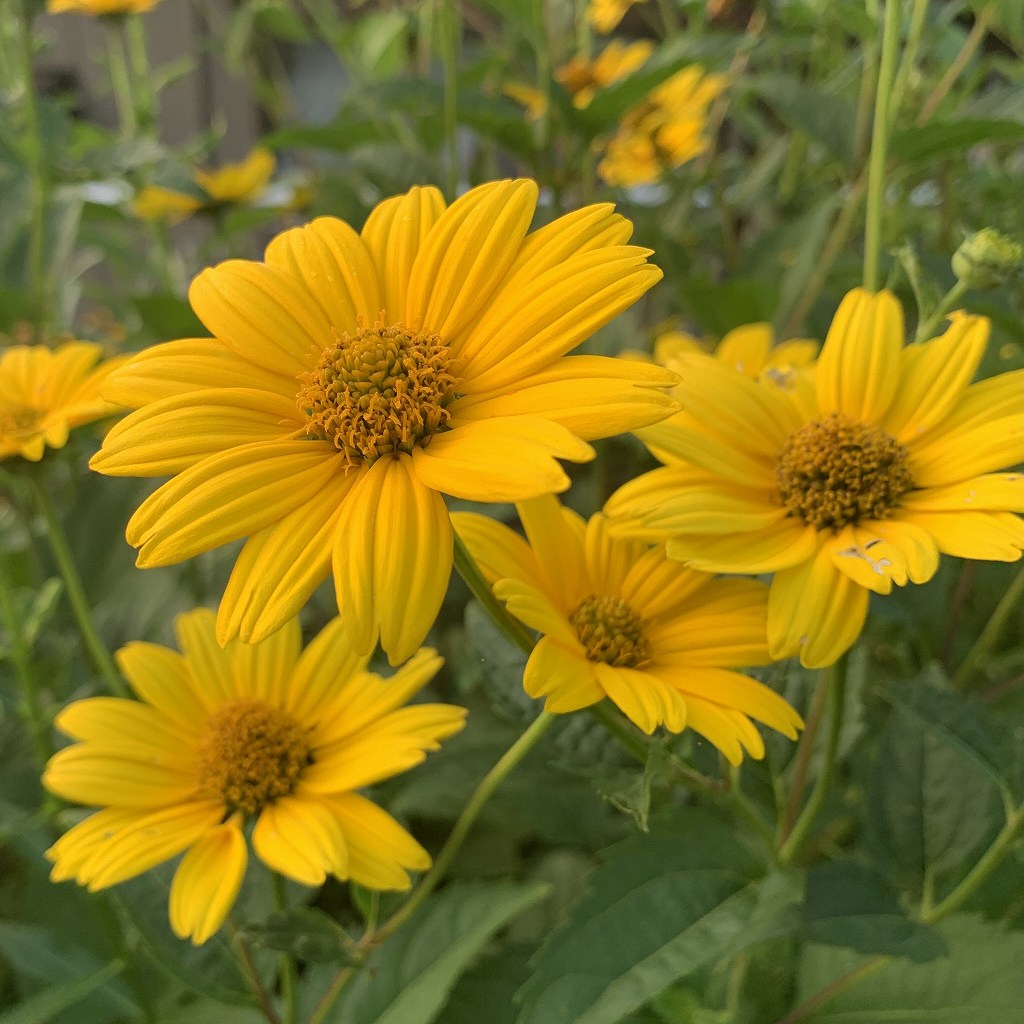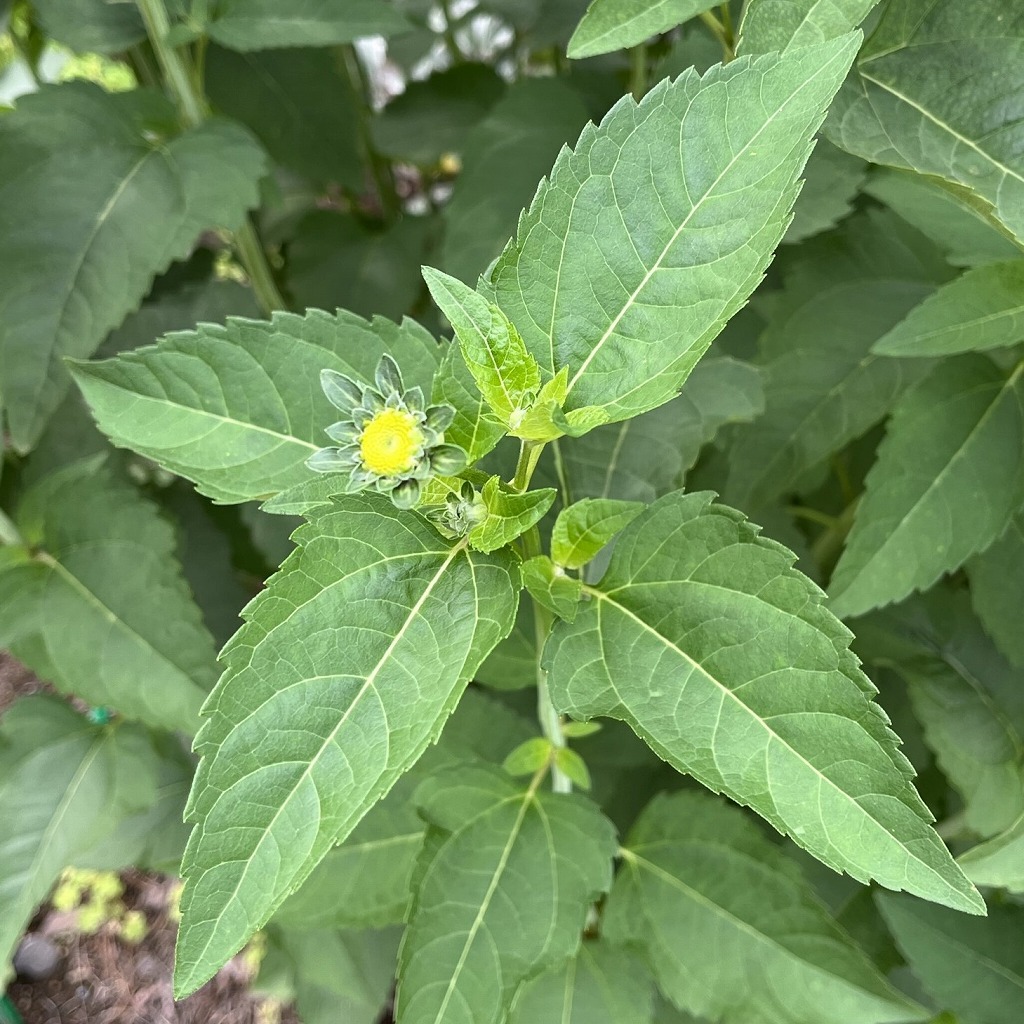キクイモモドキは、和名で菊芋に「擬き」がついたり、英名で向日葵に「偽の」がつくものの、橙黄色に輝く花が「太陽のように」真正です。
The Japanese name of False Sunflower is “Imitation of Jerusalem Artichoke” and the English name is “Fake Sunflower”. However, the orange-yellow shining flowers are genuine “like the sun”.
【仮名】キクイモモドキ, シュッコンヒメヒマワリ, ヘリオプシス
【和名】菊芋擬き, 宿根姫向日葵
【英名】False Sunflower, Smooth Oxeye
【学名】Heliopsis helianthoides
【誕生】08/ 15, 09/ 07
【開花】06, 07, 08, 09, 10月
【花色】Yellow, Orange
キクイモモドキ
キクイモモドキの概要

キクイモモドキはキク科の多年草。原産地は北米で、日本へは明治時代に渡来しました。和名に「擬き」がついたり、英名に「偽の」がつくものの、橙黄色に輝く花は太陽のように真正。花弁が散りにくいので、切り花として優れているだけでなく、ドライフラワーにも向いています。
キクイモモドキの名前

キクイモモドキの和名の由来は、花が「菊芋」に似ながら、菊芋のような塊茎が生じないので「擬き」です。英名フォルス・サンフラワーは「偽の向日葵」という意味。ラテン語の属名ヘリオプシスは「太陽のような」、種小名ヘリアントイデスは「向日葵のような」という意味です。
キクイモモドキの姿形

キクイモモドキは塊茎を作らず、地下茎から地上茎が直立・分岐します。葉は先の尖った卵形に粗く鋸歯が入り、対生。花は真ん中に筒状花が集まって盛り上がり、周りに舌状花8~15枚が並びます。筒状花は花被が5裂、雌しべが2裂。花後は舌状花が散ることなく痩果を結びます。
キクイモモドキの遠縁

キクイモモドキの遠縁「菊芋」は原産地が北米。日本へは江戸時代に伝わり、飼料用で広がりました。葉は茎の下方が卵形で対生、上方が披針形で互生。花は秋に咲き、花被の先端が丸みを帯びます。塊茎は多糖類イヌリンを豊富に含有。健康機能性食品として利用が広がっています。
False Sunflower

False Sunflower is a perennial plant of the Asteraceae family. It is native to North America and was introduced to Japan during the Meiji period. Its Japanese name is “Imitation of Jerusalem Artichoke” and its English name is “Fake Sunflower”. However, its orange-yellow shining flowers are genuine “like the sun”. The petals do not fall off easily, so it is not only excellent as a cut flower, but also suitable for dried flowers.
The Japanese name of False Sunflower, “Imitation of Jerusalem Artichoke”, comes from the fact that although the flowers resemble those of Jerusalem Artichoke, they do not produce tubers like Jerusalem Artichoke. The Latin genus name Heliopsis means “like the sun”, and the specific name helianthoides means “like a sunflower”.
False Sunflower does not produce tubers. The aboveground stems grow upright from the underground stems, and then branch out. The leaves are egg-shaped with pointed tips, with roughly sawtoothed edges, and grow opposite each other. The flowers are a cluster of tubular flowers in the center, surrounded by 8 to 15 ray flowers. The tubular flowers have five lobes in the perianth and two lobes in the pistil. After flowering, the ray flowers do not fall off, and an achene forms.
A distant relative of the False Sunflower, Jerusalem Artichoke, is native to North America. It was introduced to Japan during the Edo period and spread as a feed crop. The leaves are egg-shaped and grow opposite each other at the bottom of the stem, while the upper part is lanceolate and grows alternately. The flowers bloom in autumn, with rounded tips on the perianth. The tubers are rich in the polysaccharide inulin. Its use as a functional food is becoming more widespread.


